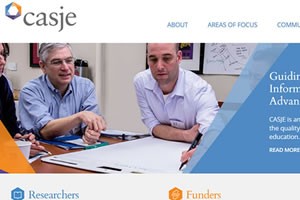The Jim Joseph Foundation is in its tenth year of existence. In a few weeks, we will share an online interactive timeline on the Foundation’s philanthropy, significant grantee outcomes, and lessons learned since its inception. The Foundation website will feature an insightful memoir on our founder thoughtfully crafted by Jim Joseph’s son and Foundation Board member, Josh Joseph. We will also share a microdocumentary on Mr. Joseph, his family history, and his lasting legacy.
As we mark this tenth anniversary, the Foundation continues to be a work in progress. Striving for continuous improvement involves concentrated time and effort among Foundation Directors and professionals. The Board is conducting a search for my successor while also taking steps to plan for transition of its founding Directors. Concurrently, the Foundation has intensified its focus on strategy in its grantmaking, governance practices, and the Foundation’s own financial and staff capacities.
All this activity has created a change management agenda for the Foundation. But the Foundation’s commitment to a founding strategic principle has not wavered: careful consideration of invited grant proposals for significant amounts of funding over four and five year periods.
We are often queried why the Foundation makes such “big bets,” enriching relatively fewer organizations with philanthropic capital when many others might benefit from Foundation grant funding. This question tends especially to surface when the Foundation determines to renew funding to one of its major grantees, often doing so at significant levels of funding support. Two very recent examples of this type of funder/grantee partnership – Hillel International and Moishe house – offer insights regarding how and why the Jim Joseph Foundation chooses to strategically fund well-aligned grantees with large grants and long-term funding.
First, it bears noting that much of the social sector struggles incessantly to achieve organizational stability. Mario Morino posited years ago that:
Non-profit organizations exist in a culture of dysfunction – limited capacity and modest outcomes pervade critical organizational elements such as strategic planning, staffing, training, management, financing and performance measurement. This dysfunction makes success highly improbable and calls into question the sustainability of organizations unable to adequately capitalize future growth (Community Wealth Ventures, Inc., “Venture Philosophy: Landscape and Expectations,” Reston, VA: The Morino Institute, 2000).
In this regard, the Jim Joseph Foundation spends a great deal of time conducting due diligence on potential grantees. For organizations that are mission aligned, potentially scalable with their reach, and critically positioned within the Foundation’s focus on education of Jewish teens, youth, young adults and young families, deep investment is inviting.
Recognizing, for example, that Hillel reaches and engages 400,000 college-age students annually, the Foundation determined early in its existence to explore effective partnership with the organization. We learned quickly that Hillel would require repeated infusions of funding to build capacity in order to most effectively engage as many college students and communities as possible. The Foundation’s grants for the Senior Jewish Educator/Campus Entrepreneur Initiative; evaluation of it; funding for the Heather McLeod Grant and Lindsay Bellows study about Hillel’s effective strategy to leverage social networks for student engagement; resources for business planning; and seed capital for Hillel projects deemed to be of high priority to a new CEO bespeak the Jim Joseph Foundation’s commitment to long-term investment in high performing grantees.
The new $16 million, five year grant the Foundation just awarded to support Hillel in accelerating its ambitious Drive to Excellence campaign affirms this deep commitment.
An organization at an entirely different stage of its development – and one that is distinct in its nature – than Hillel is Moishe House. The Jim Joseph Foundation is a “both/and” funder. This is to say that both new, fledgling organizations and legacy institutions are beneficiaries of Foundation investment. In the case of the former, the Foundation understands keenly that:
Organizations do not emerge full blown and high performing. It takes years of thoughtful design, capacity building, and program implementation for an agency to know its work thoroughly enough, learn from its efforts, understand its strengths and weaknesses, and refine its strategy to the point where it has a robust framework and platform for managing its performance (Hunter, David. Working Hard and Working Well. Hunter Consulting LLC, 2003).
Repeated Jim Joseph Foundation funding of Moishe House, totaling $8,230,000 over nine years, has been awarded with intent to steadily build the organization’s capacity and to help it become more proficient at monitoring its performance and measuring achievement of targeted outcomes. Jen Rosen, Moishe House’s chief operating officer, reflects this interest in commenting that Moishe House “needs to assess the longer term impact on residents and participants. As a relatively new organization, the data we have collected has been helpful, but as we near our 10 year anniversary, it’s time to begin assessing the longer term implications of involvement in Moishe House. During the recent study, roughly 900 respondents agreed to be contacted for follow up within three years in order to begin a longitudinal study” (Rosen, Jen, August 26, 2015. “How Moishe House Looks Different Post Evaluation,” eJewish Philanthropy).
Numerous Moishe House accomplishments, all well documented, encouraged the Jim Joseph Foundation to extend grant application renewal invitations to Moishe House several times. The Foundation relies on Moishe House to execute smartly on its objectives and goals, thereby helping the Foundation realize its vision of “ever increasing numbers of young Jews engaged in ongoing Jewish living and choosing to live vibrant Jewish lives.”
There are clearly forces at work bringing pressure to bear on not-for-profits for improved efficiency, performance, and results. The steady proliferation of 501c3s—“the number of non-profits in the United States has nearly doubled since 1995, from 518,000 to more than 1 million today” (Stoolmacher, Irwin. 2015, September. “With Money So Tight, We Need to Get Rid of Poor-Performing Charities,” The Chronicle of Philanthropy, page 29.)—leads many to contend the sector is riddled with duplication, redundancy, and inefficiency. Moreover, given that systematic, right-sized evaluation of Jewish education funded programs and projects is still not normative, it is extremely difficult to find credible comparative data for philanthropic decision making.
In this environment, programs that effectively prepare and professionally develop Jewish educators are not readily identifiable. The Foundation candidly could not project with any certainty if its $45 million Education Initiative grants—$15 million each over seven years to HUC-JIR, JTS, and YU—would produce outcomes ultimately worthy of the investment. Yet, the Foundation decided to not only award the grants for credential and degree granting courses and programs, faculty, and instructional technology, but also to avail the institutions of exceptional technical assistance as a means to augment the funding. This contract expertise included the American Institutes for Research (AIR), which is conducting the Education Initiative’s formal evaluation. The Parthenon Group provided upfront analysis and guidance on each institution’s structures for project management and administration. A premier college enrollment firm, Noel Levitz, offered much needed counsel on marketing and recruiting, enrollment trends, and setting of tuition rates. The Foundation’s funding made it possible for the institutions to contract with Columbia Center for New Media Teaching and Learning for a cross-institutional technology fellowship. Now, with four comprehensive formative evaluations completed, findings reveal the following:
- 1,412 educators have received certificates or degrees from one of the three participating institutions.
- The degree and professional development programs under the Education Initiative promoted leadership development through improved management skills and content knowledge.
- The degree programs supported entry into Jewish day school teaching and the professional growth of experienced Jewish day school teachers and school leaders.
AIR will produce a fifth and final evaluation next year. At the Foundation’s upcoming October Board meeting, Foundation Directors will discuss with AIR Vice President Dr. Mark Schneider and the evaluator’s project director, Dr. Yael Kidron, a discrete set of questions to be addressed in this summative evaluation report. The Foundation’s learning over seven years of this initiative will hopefully be captured in the 2016 report and disseminated to the field. Already—as we anticipated—it is clear that improving the quality, breadth, and depth of education training in institutions of higher education necessitates a long-term strategy to achieve results premised on extended, multi-year commitments of funding.
As one last example of more than a dozen of these relatively large, long-term grants, consider the Foundation’s award in its early years to BBYO for BBYO’s Professional Development Initiative (PDI). This grant for continuing nonprofit management and Jewish education was awarded again without much relevant data on similar professional development efforts to inform the Foundation’s grantmaking. Yet BBYO’s mission alignment with the Foundation, its growth trajectory of Jewish teen membership and engagement, its effective organizational management and controls, and an active, diligent Board of Directors governance made PDI an attractive investment opportunity for the Foundation.
Jim Joseph Foundation professionals interacted routinely with BBYO leadership and key PDI personnel over eight years of grant implementation in a project the Foundation generously funded. This shared persistence by BBYO and the Foundation is a recognition that success, or lack of it, in improving education of young Jews is neither a simple nor necessarily short-term proposition.
To that end, Informing Change just completed Briefing papers and evaluation on BBYO’s PDI. The ten lessons Informing Change describes in the report suggest ways the Foundation could have more effectively supported BBYO in its implementation of PDI. The evaluation also points out a few shortcomings in PDI’s program design. Overall, what is noteworthy is that the amount of funding awarded and the duration of time afforded to BBYO in its PDI experimentation allowed the organization to learn. Additional investment of time and money produced an evaluation, as the Briefing papers note, that responds to a human resource talent issue that is fundamental to the field:
Leaders across the Jewish communal sector have a number of strategic questions to consider related to developing talent. These questions range from considering what types of education are most beneficial in which circumstances (e.g., considering a generalist degree or a credential offered through a Jewish institution), to the role of personal learning, to the tension of helping professionals do their jobs better today while also preparing them for the future.
PDI has contributed to these discussions by testing new approaches to professional development. As the program comes to a close, it surfaces the lessons shared in this brief and provides a case study of Jewish community practitioners and employers to look to when building future endeavors. As the discussion of professional development continues in the Jewish communal sector, the considerations and practices that emerged through the PDI experience can hopefully strengthen development opportunities going forward (Advancing Early-Stage Jewish Careers: Lessons from BBYO’s Professional Development Institute, Informing Change, July 2015).
The Jewish high holy days enjoin us to personally reflect and repent, atone and account—to recommit to principled, purposeful lives reflecting time honored Jewish values. Describing above one important aspect of Jim Joseph Foundation philanthropy is an effort to be professionally reflective and accountable, with the hope that valuable lessons the Jim Joseph Foundation has learned will contribute to your practice.
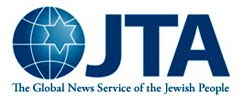 The San Francisco-based Jim Joseph Foundation has approved nearly $6.4 million in new grants for Jewish educational projects.
The San Francisco-based Jim Joseph Foundation has approved nearly $6.4 million in new grants for Jewish educational projects.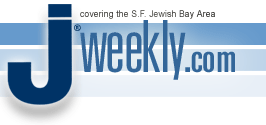 Some 250 Jewish educators, educational leaders and funders spent three days in Las Vegas last month discussing and learning new strategies for teaching the subject of Israel to Jews in North America.And, in this case, the hope is that what happened in Vegas won’t stay in Vegas.
Some 250 Jewish educators, educational leaders and funders spent three days in Las Vegas last month discussing and learning new strategies for teaching the subject of Israel to Jews in North America.And, in this case, the hope is that what happened in Vegas won’t stay in Vegas.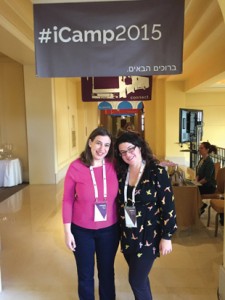
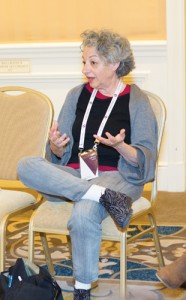
 Hot on the heels of a report showing major gaps in American-Jewish college students’ knowledge about the State of Israel, some 250 Jewish educators, funders and other stakeholders gathered in Las Vegas for a three-day conference on Israel education.
Hot on the heels of a report showing major gaps in American-Jewish college students’ knowledge about the State of Israel, some 250 Jewish educators, funders and other stakeholders gathered in Las Vegas for a three-day conference on Israel education.
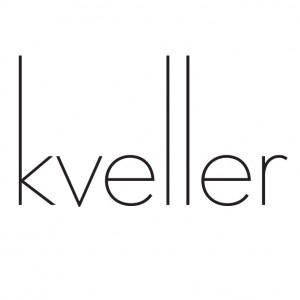 As an educator and a parent, I know my task is not only to provide answers. I know that allowing children the opportunity to discover, question, challenge, and struggle is just as valuable, if not much more. But in times of crisis, in times where the news from Israel breaks my heart, I find it hard to remember that.
As an educator and a parent, I know my task is not only to provide answers. I know that allowing children the opportunity to discover, question, challenge, and struggle is just as valuable, if not much more. But in times of crisis, in times where the news from Israel breaks my heart, I find it hard to remember that.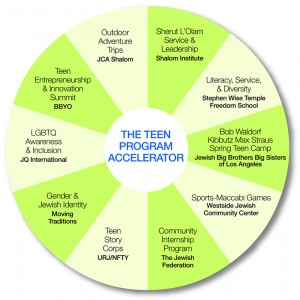
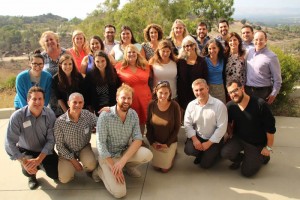
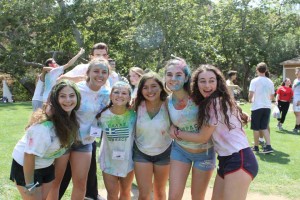
 Three local Jewish day schools have started the second year of an initiative that aims to improve Israel experiences and education in Jewish day schools.
Three local Jewish day schools have started the second year of an initiative that aims to improve Israel experiences and education in Jewish day schools. in building Jewish community.
in building Jewish community.
